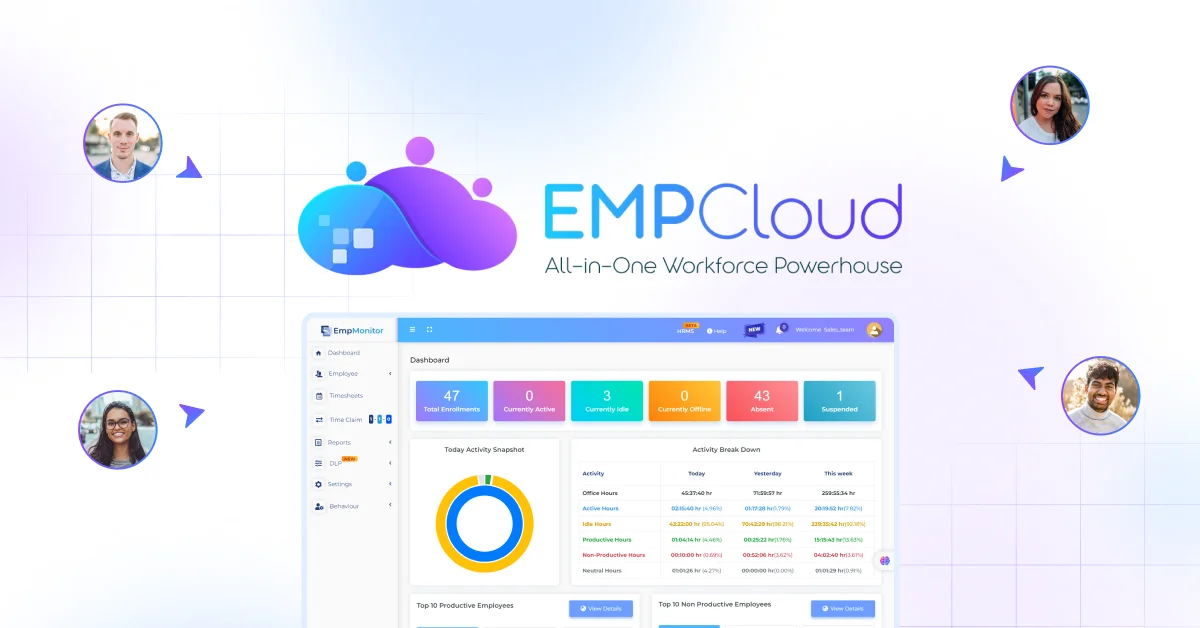
In industries where operations never sleep, creating the right work structure can make or break team efficiency. That’s where the Panama schedule comes in, a well-known shift rotation system designed to balance continuous coverage with employee well-being.
Unlike rigid workweek patterns, this schedule provides a smart way to maintain round-the-clock coverage without overloading employees. Over the years, many organizations have embraced it to reduce fatigue, improve morale, and maintain smooth operations. But what exactly makes this system work so well, and how can businesses implement it effectively?
Listen To The Podcast Now!
What Is A Panama Schedule And Why Does It Matter?
Before understanding how it works, it’s important to first know what is a panama schedule. At its core, it’s a rotating shift pattern designed to keep operations running 24/7. Employees are divided into teams that work alternating 12-hour shifts. Over a repeating two-week cycle, the schedule provides a mix of workdays and off days to give workers consistent rest.
The brilliance of this approach is its simplicity. By clearly defining work periods and off days, it supports workload prioritization, allowing employees and managers to focus on critical tasks during their shifts without burnout. Instead of pushing employees to work long weeks with minimal breaks, this system ensures structured rest periods without compromising business operations. That’s why it’s especially common in industries like manufacturing, healthcare, utilities, transportation, and security.
How Does Panama Schedule Actually Work?
The panama shift schedule generally uses four teams covering two shifts—day and night. Employees usually work 12-hour shifts, such as 7 a.m. to 7 p.m. or 7 p.m. to 7 a.m., rotating over a two-week cycle.
For example, a panama schedule example might involve Team A working two days on, two days off, three days on, two days off, and two days on, with three days off at the end of the cycle. Other teams follow staggered patterns to ensure constant coverage. This setup guarantees that at least one team is always on duty while maintaining fairness for all employees.
Also Read:
How To Master Workload Prioritization For Higher Productivity?
How Is Panama Schedule Different From Traditional Work Patterns?
Unlike regular 8-hour shifts or standard 9-to-5 setups, the panama shift schedule concentrates work hours into fewer but longer shifts. Employees typically work three to four days a week and get the rest off. This gives them larger blocks of personal time.
Traditional schedules can lead to more fatigue since employees often work five to six days with only short breaks. The panama system flips that, giving longer breaks without reducing total hours. This difference makes it particularly appealing in demanding industries that rely on sustained focus and energy.
What Impact Does Panama Schedule Have On Employees?
For employees, This schedule brings both advantages and challenges. On the positive side, having several full days off every week can significantly improve work-life balance. People have more time for family, rest, or personal projects.
But the long 12-hour shifts can be demanding. Physical and mental fatigue may build up if breaks aren’t managed properly. Night shifts can disrupt sleep patterns for some workers. That’s why many organizations provide wellness programs and shift training to help their teams adjust.
When managed with care, this schedule allows employees to enjoy more control over their personal time while still meeting the demands of a full-time job.
What Are The Benefits Of Panama Schedule For Employers?
Employers gain several advantages by implementing this schedule. It not only streamlines operations but also builds a stronger, more satisfied workforce.
Key benefits include:
- Improved Operational Stability:
The consistent shift pattern reduces scheduling confusion and ensures smooth 24/7 coverage. - Reduced Overtime Costs:
Balanced shift distribution helps minimize excessive overtime and unnecessary labor expenses. - Easier Workforce Planning:
With a predictable schedule, forecasting staffing needs becomes simpler and more accurate. - Higher Employee Satisfaction:
Reliable time off helps employees maintain a healthy work-life balance, leading to greater job satisfaction. - Lower Turnover Rates:
Happier employees are more likely to stay, reducing the costs and disruptions associated with frequent hiring. - Increased Trust and Engagement:
A fair and transparent schedule fosters stronger relationships between employers and their teams.
What Key Elements Make The Panama Schedule Effective?
To ensure a Panama work schedule delivers both operational efficiency and employee satisfaction, several critical elements must be in place:
Key elements include:
Clear Communication:
Employees should fully understand their shift rotations, including start and end times, rotation patterns, and any changes. Clear communication reduces confusion and helps staff plan their personal time effectively, contributing to smoother business process optimization.
Fair and Balanced Shift Distribution:
Day and night shifts must be assigned equitably among employees. A fair rotation prevents overburdening certain staff members and ensures everyone experiences similar workloads and rest opportunities.
Fatigue Management:
Adequate breaks and rest periods between shifts are crucial to prevent burnout, maintain focus, and support overall health and safety. Proper scheduling reduces errors and workplace accidents.
Leveraging Technology:
Scheduling software or time-tracking tools can automate complex rotations, track attendance, and identify potential conflicts, reducing administrative burden and improving accuracy.
Regular Monitoring and Feedback:
Continually review the schedule’s effectiveness and gather employee feedback. This helps identify patterns of fatigue, dissatisfaction, or coverage gaps, allowing for timely adjustments.
Compliance with Labor Regulations:
Ensuring that the schedule meets local labor laws regarding maximum working hours, mandatory breaks, and overtime rules protects the organization from legal issues.
Flexibility for Emergencies:
A well-designed Panama work schedule should allow for adjustments in case of sudden absences, peak workloads, or unexpected operational demands without disrupting overall workflow.
Also Read:
How To Master Business Process Optimization For Growth?
How Are Day And Night Shifts Balanced And Fatigue Reduced In A 12 Hour Panama Schedule?
Managing day and night shifts effectively is a cornerstone of a successful Panama work schedule. While day shifts align more naturally with the body’s circadian rhythm, night shifts can be more challenging, though they often come with added incentives. Proper rotation ensures no team consistently bears the burden of night work, maintaining fairness and employee morale. Many organizations implement rotating systems or preference-based assignments to balance workloads and help employees adjust smoothly.
Because the 12 hour Panama schedule involves extended shifts, fatigue management is essential. Companies can reduce fatigue by encouraging:
- Proper Hydration and Nutrition: Keeping energy levels stable throughout long shifts.
- Short Rest Breaks During Shifts: Allowing employees to recharge and stay alert.
- Structured Recovery Periods: Ensuring adequate rest between shifts for optimal performance.
- Sleep Planning: Particularly important during night rotations to maintain overall health.
- Wellness Initiatives: Programs like ergonomic support, mental health resources, and stress management can further reduce fatigue.
By combining balanced shift rotations with effective fatigue management strategies, organizations can maintain productivity, reduce health risks, and improve employee satisfaction in a 12 hour Panama schedule.
How Should Businesses Implement Panama Schedule?
Implementing a panama shift schedule requires a structured approach. Start by assessing operational needs to ensure this model fits your organization. Engage employees early in the planning process, as involving them increases acceptance and reduces resistance.
Once the structure is in place, using tools like a time tracking tool or a comprehensive employee management software simplifies scheduling and monitoring. Regular feedback and periodic adjustments further optimize the schedule to meet both operational and employee needs.
What Metrics Should Be Tracked In Panama Schedule?
Tracking the right metrics ensures the Panama schedule remains efficient and supports both operational goals and employee well-being. Key metrics include attendance, fatigue-related incidents, overtime, and productivity. Collecting employee feedback also provides valuable insights into schedule effectiveness and areas for improvement.
Digital tools like EmpCloud streamline this tracking. EmpCloud centralizes workforce data, enabling managers to monitor coverage, performance, and shift adherence with minimal effort. Automated reporting helps identify patterns, such as recurring fatigue during certain rotations, so adjustments can be made proactively.
Additionally, tracking employee satisfaction and engagement through EmpCloud can highlight how well the schedule aligns with team needs. High satisfaction scores often correlate with reduced turnover and higher productivity, making it a critical metric for long-term success. Regularly analyzing these metrics ensures the Panama schedule remains fair, efficient, and sustainable for both employers and employees.
How Does EmpCloud Transform Panama Schedule Management?
EmpCloud is a unified employee management software designed to simplify workforce management, making the implementation of a Panama schedule seamless. Trusted by over 1500 industry leaders, EmpCloud allows managers to maintain full coverage while significantly reducing administrative stress.
Unified Workforce Control:
EmpCloud provides real-time tracking of shifts, attendance, and employee locations, enabling managers to ensure that every shift is fully covered without manual intervention. With geo-location tracking, field teams and remote staff can be monitored efficiently, reducing gaps in coverage and improving operational reliability.
Productivity and Project Insights:
Managers gain actionable insights into employee performance through EmpCloud’s productivity dashboards. The software allows tracking of tasks in real time, identifying bottlenecks, and generating in-depth reports.
This helps organizations optimize workload distribution, make informed staffing decisions, and ensure projects stay on schedule.
HR-Centric Features:
EmpCloud integrates automated timesheets, leave and attendance tracking, face recognition attendance systems, and policy management, creating a complete HR ecosystem.
These features streamline HR workflows, ensure compliance, reduce errors, and simplify tasks like payroll, approvals, and shift adjustments, all essential when managing long, rotating Panama shift schedules.
Centralized Dashboard:
All employee and workforce data is consolidated in a single, centralized dashboard, giving managers instant visibility into attendance, performance, and scheduling. This centralized view helps identify trends, manage workloads efficiently, and maintain precise oversight of complex shift rotations, ensuring the Panama shift schedule operates smoothly without operational gaps.
By combining scheduling, time tracking, performance monitoring, and HR management, EmpCloud transforms the management of complex shifts into a seamless, error-free process, making it an indispensable tool for modern organizations running a Panama schedule.
How Can Businesses Balance Panama Schedule With Employee Wellness?
Maintaining employee wellness while running a Panama work schedule is essential for both productivity and long-term workforce satisfaction. Extended 12-hour shifts can be demanding, so organizations need a strategic approach to ensure employees remain healthy, motivated, and engaged.
Flexible Shift Swaps and Rotation Options:
Allow employees to exchange shifts or choose preferred rotations when possible. This flexibility helps staff manage personal commitments and reduces stress associated with fixed night or day shifts.
Comprehensive Health and Wellness Programs:
Provide initiatives such as fitness memberships, mental health counseling, nutrition guidance, and ergonomic support. Wellness programs help employees cope with long shifts and maintain physical and mental well-being.
Adequate Recovery and Rest Periods:
Ensure sufficient breaks during shifts and structured recovery time between consecutive shifts. Proper rest is critical to prevent fatigue, maintain alertness, and reduce the risk of errors or accidents.
Open Communication and Feedback Channels:
Encourage employees to share concerns about workload, schedule preferences, or fatigue. Transparent communication fosters trust and allows managers to make data-driven adjustments to the schedule.
Monitoring Workload and Fatigue:
Track metrics like overtime, fatigue-related incidents, and shift adherence (tools like EmpCloud can help). This proactive monitoring helps identify overburdened employees and prevent burnout.
Recognition and Incentives for Challenging Shifts:
Reward employees handling night rotations or consecutive long shifts. Incentives can include bonuses, additional time off, or other perks, boosting motivation and morale.
Education on Sleep and Lifestyle Management:
Train employees on effective sleep strategies, nutrition, and hydration specifically tailored for night or extended shifts. Knowledge empowers employees to manage energy levels during demanding schedules.
By combining flexible scheduling, wellness initiatives, and proactive monitoring, businesses can run a Panama schedule efficiently while prioritizing employee health, performance, and job satisfaction.
How Is Panama Schedule Evolving In Modern Workplaces?
The Panama work schedule continues to evolve with advances in technology. AI, automation, and smart workforce management tools enable data-driven scheduling, helping managers optimize shift coverage, reduce overtime, and prioritize employee health and well-being. Modern systems also allow for real-time adjustments, ensuring that workforce planning remains flexible and efficient.
Additionally, organizations are increasingly adopting employee-centric approaches alongside technological solutions. This includes integrating wellness programs, fatigue tracking, and personalized shift preferences into scheduling decisions. By combining AI-powered tools with a focus on work-life balance, companies can create schedules that maximize productivity while supporting long-term employee satisfaction and retention.
Conclusion
The panama schedule is more than a shift pattern, it’s a strategy for maintaining continuous operations while supporting employees. When combined with thoughtful planning, clear communication, and tools like EmpCloud, organizations can run smoother, reduce administrative burden, and enhance overall productivity.
With the right approach, a panama schedule becomes a win-win for businesses and employees alike.
FAQs
1. How can employees adjust their sleep schedule with Panama shifts?
Employees can adapt by maintaining a consistent sleep routine, using blackout curtains for daytime sleep after night shifts, and avoiding caffeine close to bedtime. Gradually shifting sleep hours before a rotation also helps reduce fatigue.
2. Can Panama schedule be customized for part-time employees?
Yes, the panama schedule can be adjusted for part-time staff by shortening shift lengths or reducing days per cycle while maintaining coverage. Tools like EmpCloud make it easier to manage these customized rotations without errors.
3. How does Panama schedule affect overtime and payroll management?
The structured rotation of the panama schedule reduces unexpected overtime by ensuring adequate staffing for each shift. Integrated platforms like EmpCloud automate timesheets and payroll calculations, minimizing errors and ensuring accurate payments.








